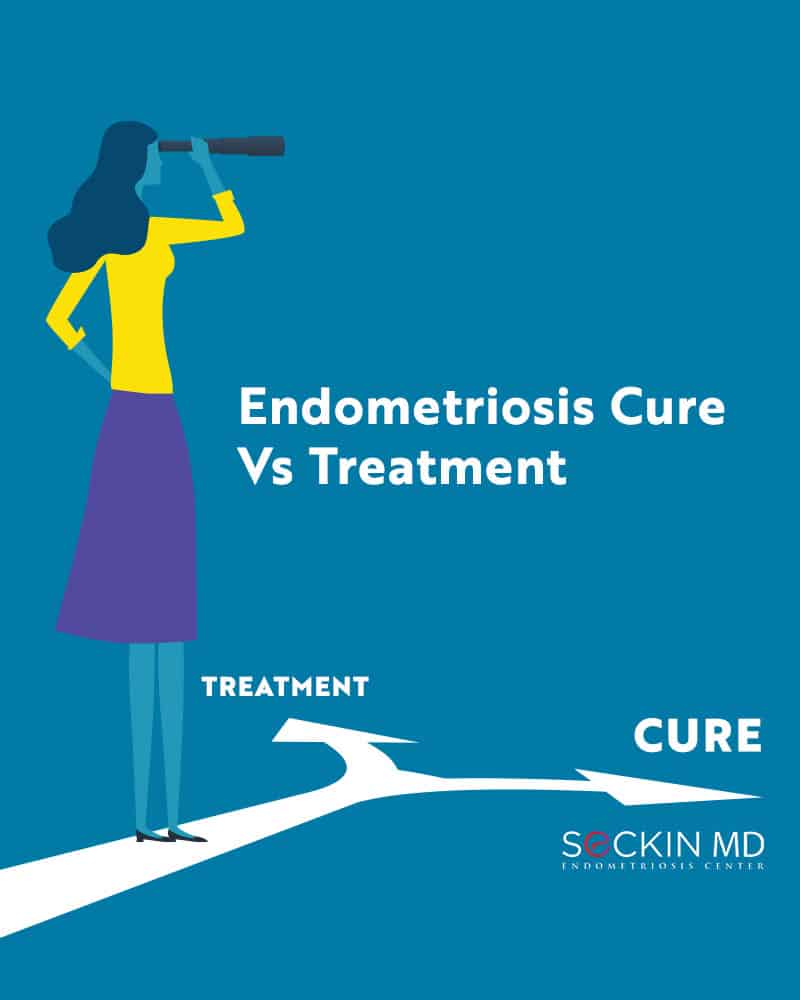Endometriosis Cure Vs Treatment

Endometriosis is a chronic, progressive disease affecting nearly 176 million women worldwide. Its exact cause is not clear and its diagnosis is hard with many healthcare professionals still not being familiar with it. This complicates the treatment process. While there’s no cure for endometriosis, the right specialist can offer the best treatment.
Definition of cure and treatment
The term “cure” implies that a patient no longer has the underlying condition and is completely free of the disease. “Treatment”, on the other hand, refers to the methods used to improve health, which may not result in complete removal of the disease.
There are a few criteria that determine whether a particular therapy is curative. These include:
- Complete alleviation of symptoms
- Side effects of the intervention
- Possibility of recurrence of symptoms
- Patient’s own experience of improvement or worsening of symptoms during the course of the therapy
Most healthcare in vogue today, with the exception of certain acute illnesses such as bacterial or parasitic infections, are treatments looking at the alleviation of symptoms while preventing recurrence as much as possible.
A cure for one disease can be a treatment for another
The applicability of the terms “cure” and “treatment” can vary depending on the underlying condition. For instance, a hysterectomy, which is the complete removal of the uterus, can be a cure for adenomyosis. Since adenomyosis occurs within the uterus, a hysterectomy will remove all adenomyosis lesions.
On the other hand, hysterectomy becomes just a treatment option in the case of endometriosis as endometrial lesions can grow outside the uterine cavity as well. So merely removing the uterus will not prevent lesions from continuing to develop in other areas. Moreover, the aim of endometriosis treatment should be to preserve organ function and fertility as much as possible. Therefore, hysterectomy should only be the last resort when all other options fail and the patient has given her due consent after evaluating all the merits and demerits of the procedure.
Is there a cure for endometriosis?
Endometriosis currently has no cure in the strictest definition of the term. Even laparoscopic excision surgery, which is the “gold standard”, is still a treatment methodology but a highly effective one.
When conducted by a highly skilled surgeon, it allows for the permanent removal of all identified endometrial lesions resulting in the greatest pain relief. At the Seckin Endometriosis Center, we use our patented Aqua Blue Contrast (ABC) technique to easily identify all endometriosis lesions. Combined with “cold excision” that does not use heat or electricity to remove scar tissue, Dr. Seckin’s expert team is able to provide long-lasting symptomatic relief while also ensuring that healthy tissue is not damaged.
Other management techniques
Depending on the extent of symptoms, many healthcare providers may suggest palliative care (care aiming to improve symptoms) including the use of combined oral contraceptives, switching to an anti-inflammatory diet, and using recreational therapy, exercises, and stress management techniques such as yoga and meditation. However, such palliative care may not provide symptom relief for the long term and most do not address the underlying cause of the disease.
Have you had endometriosis surgery or hysterectomy? Please share your experience and comment on our post on Facebook or Instagram.
Get a Second Opinion
Our endometriosis specialists are dedicated to providing patients with expert care. Whether you have been diagnosed or are looking to find a doctor, they are ready to help.Our office is located on 872 Fifth Avenue New York, NY 10065.
You may call us at (646) 960-3080 or have your case reviewed by clicking here.